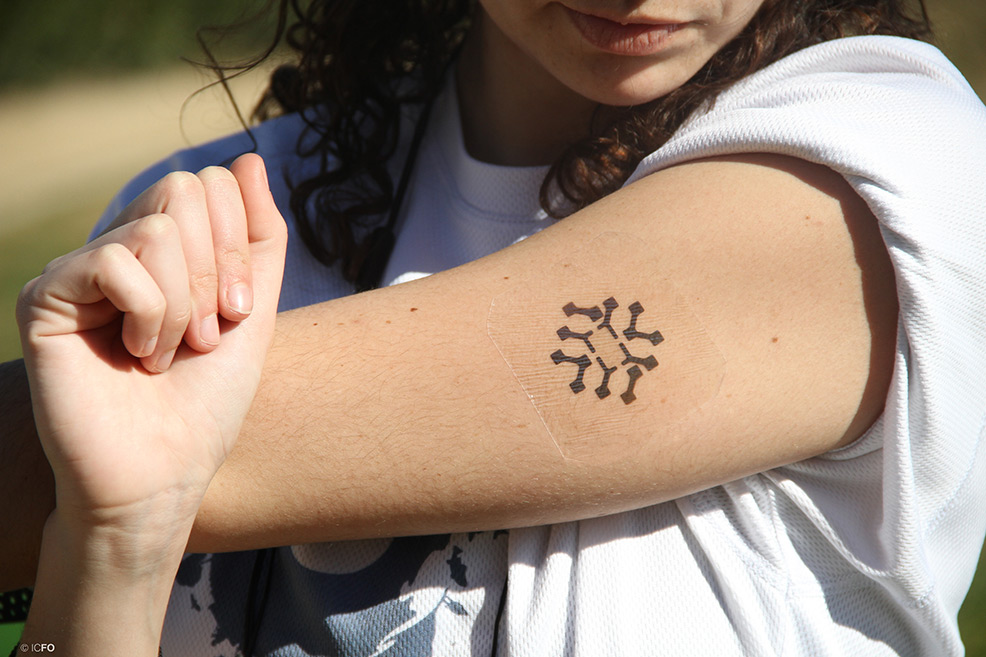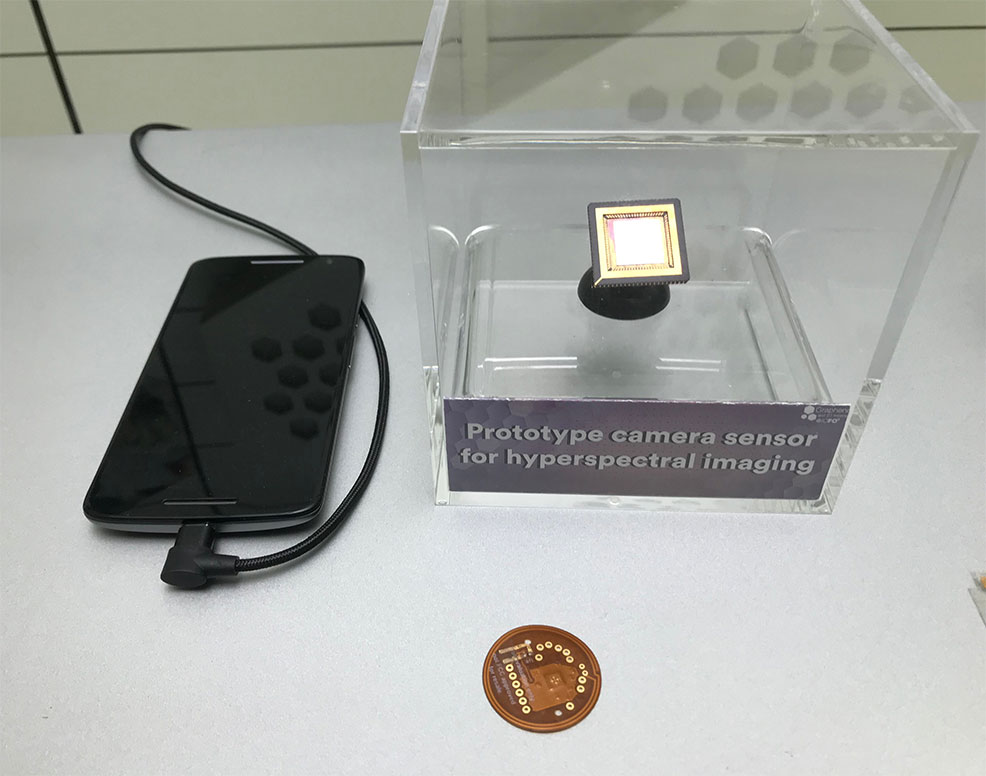
20th February 2019 Graphene-based wearables for health monitoring The Graphene Flagship – one of the EU's biggest research projects – is presenting over 20 graphene-based prototypes at Mobile World Congress (MWC) next week in Barcelona, Spain. The "Graphene Pavilion", supported by the European Commission and GSMA, will be on display from 25th-28th February. Four of the 20 prototypes are developed by the Institute of Photonic Sciences (ICFO), Barcelona. These new technologies aim to turn mobile phones into life-saving devices. The first of the ICFO's devices on display will allow customers to monitor their level of exposure to sunlight through a UV sensor. Designed as a flexible, transparent and disposable patch, it connects to a mobile device and alerts the user once he or she has reached a defined threshold of sun exposure.
Using the same core technology as the UV patch, the ICFO is also developing a fitness band, to measure heart rate, hydration, oxygen saturation, breathing rate and temperature, while monitoring the user when he or she is exercising, for example. However, the fitness band does more than just measure physical activity. Consider the following scenario. A person is trekking in the remote Amazon jungle with limited access to water. By measuring the skin hydration of their body with ICFO's fitness band, the user can optimise their water intake, preventing any sort of dehydration. Similarly, an explorer hiking to the peak of Mount Everest could use the band to accurately monitor oxygen saturation in blood. The high altitude can severely affect oxygen saturation in the body. Using this band, the hiker could monitor their levels and receive a warning if their blood's oxygen decreased below a certain level.
In addition to these prototypes being exhibited at MWC 2019, the ICFO will also showcase two other light-based graphene technologies. These include the world's smallest single-pixel spectrometer and a graphene-enabled hyperspectral image sensor, both with broadband capabilities. By enabling spectroscopy in such tiny dimensions, consumers could now be equipped with tools that were previously only available to highly specialised laboratories using costly and bulky photodetection systems. From the detection of counterfeit drugs to the identification of harmful substances within a product that we use or food that we eat, compact and low-cost spectrometers could become an indispensable accessory of our everyday life. "Built into a smartphone camera, the graphene-based camera sensor allows phones to see more than what's visible to a human eye," said Frank Koppens, Chair of the Graphene Flagship MWC Committee. "Made up of hundreds of thousands of photodetectors, this incredibly small sensor is highly sensitive to UV and infrared light." "This technology would allow users in the supermarket to hold the camera to fruit and infer which is the most fresh piece. Or, in a more extreme example, the camera could be used for driving in dangerously dense fog, by providing augmented outlines of surrounding vehicles on the windscreen." To learn more about these technologies and to meet the experts developing these applications, visit the Graphene Pavilion at MWC in NEXTech Hall 8.0 Stand 8.0K31 between 25th-28th February.
Comments »
If you enjoyed this article, please consider sharing it:
|








